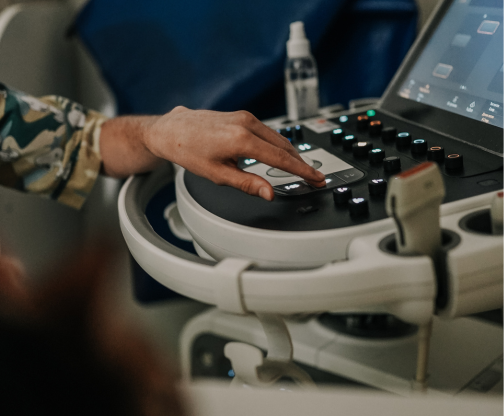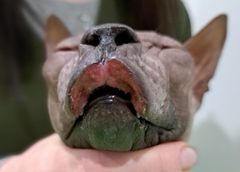Antiparasitic treatments
Опубліковано
17.05.2022
Antiparasitic treatments
Antiparasitic treatments are an integral part of caring for any pet. Currently, the veterinary market offers a wide variety of antiparasitic drugs. How do you not get lost in it?
Antiparasitic drugs can be divided into:
🔘form of release (drops, tablets, collar)
The active ingredient in the product.
The ACTIVE SUBSTANCE affects the spectrum of the drug's action - it can be narrow and fight only fleas, or it can be wider and, in addition to fleas, affect
▫️іксодових ticks (those that we can see with the naked eye);
▫️свербіжних ticks (visible only under a microscope and causing skin diseases accompanied by itching); ▫️гельмінтів.
The drug can have a systemic effect, i.e., even when applied to the skin, it can be absorbed into the bloodstream and provide protection or accumulate in the skin, sebaceous and sweat glands.
Most drugs (primarily systemic) will work after a parasite bite; some substances are aimed at repelling parasites to prevent bites, i.e. have a so-called repellent effect (this is especially important for animals with flea allergic dermatitis). Often, antiparasitic drugs have a combination of active ingredients to increase the effectiveness or broaden the spectrum of action.
FORM OF RELEASE. One of the most popular and most commonly used forms is SPOT-on products or so-called withers.
The animal should not be washed for several days BEFORE and AFTER application and should be applied in a place where it cannot lick it off.
Such products can act both systemically (absorbed into the bloodstream and thus exert their effect) and with a cumulative effect (in the skin, sebaceous and sweat glands).
The latter may have an active ingredient that is more or less resistant to washing off, but in any case, if you often bathe your pet or if he often stays in open water in the summer, this is not the best choice for him. Spot-on products with a repellent effect are often used in combination with other products as additional protection.
Collars have long been popular and are still widely used, but they are not self-sufficient as the only source of protection.
The collar itself is a tape made of synthetic material impregnated with an antiparasitic agent. Therefore, in order to have an effect, it must be in close contact with the skin, which is almost impossible for dogs with dense fur.
It is also necessary to pay attention to the active ingredient itself: it can be a highly effective and safe substance (for example, flumethrin), or it can be FOS and VOCs, which are toxic to humans, have a teratogenic effect and are extremely undesirable for use in animals indoors and animals in contact with children.
However, it is important to understand that regardless of the safety of the active ingredient, if you have small children who hug the animal and can put the collar in their mouths, you should refuse this product.
Another warning for free-roaming animals is that the collar should be easy to unfasten to prevent strangulation in case of sticking in hard-to-reach places.
Tablets are the most widely used ectoparasite control medications. Among them, there are also combined versions that act not only on parasitic insects but also on helminths, which helps prevent heartworm disease and intestinal parasites. Such drugs have a systemic effect, so they are the best option for animals that walk a lot, especially in nature, go hunting, often swim or swim in open water.
The products that can be used with the smallest ones until other products can be used are sprays. However, dosage recommendations should not be neglected.
Ineffective products are SHAMPOONS and POWDERS.
FREQUENCY OF TREATMENTS:
Quite often, animal owners mistakenly carry out antiparasitic treatments twice a year, for example, in the spring before going to the country and in the fall when they take their animals from there. But most drugs used in the form of drops on the withers are designed for only 4 weeks.
There are also drugs that can work for up to 12 weeks.
But be sure to consult your doctor about the frequency of use of a particular product that will be optimal for your animal, because its lifestyle will be important in this choice.
Also, owners often neglect treatments in the winter, but it should be noted that in most of Ukraine, the average temperature in the winter months is above zero, which promotes tick activity, and fleas are active indoors throughout the year.
SAFETY:
Often, owners are concerned about the safety of antiparasitic drugs and whether treatments will harm the animal, especially if it has certain diseases.
In fact, there are very few pathologies that can be a direct contraindication for treatments. Most modern products are made by trusted manufacturers and have a low degree of toxicity and are designed for continuous use for a long time.
Side effects, such as individual intolerance or contact dermatitis at the place of application, are indeed possible, but their frequency and impact on the body are not comparable to the harm that can be caused by parasite-borne diseases!
Can "dog" medicines be used for cats and vice versa?
You should be very careful with such substitutions, and if you are not a veterinarian, you should never use the drugs yourself, bypassing the instructions!
There are medications for cats and dogs with the same active ingredient, which will be presented in different dosages for cats and dogs. This dose in mg/kg may be the same for cats and dogs, or it may differ significantly. For the treatment of certain diseases, doctors can use off-label drugs, taking into account the dose, etc. However, there are pyrethroid substances that are well tolerated by dogs and are extremely dangerous for cats. The use of such products for cats can lead to serious consequences or even death. Therefore, even if you have the slightest doubt about the use of a particular product, be sure to consult your doctor!
The head of the dermatology department of the Zoolux veterinary clinic, TATIANA ANDRONOVA, discusses this topic in more detail. We bring to your attention a video on our YouTube channel, which you can open by clicking here: https://youtu.be/yyBAGaCW4qg
Схожі статті

Preparation for ultrasound examination (ultrasound)
It is important to remember that proper preparation of the animal can significantly facilitate the abdominal ultrasound process. By performing this procedure, the doctor can detect possible problems in time and provide proper treatment. High-tech ultrasound is one of the ways to quickly and informatively diagnose and ensure a long and healthy life for our pets.

Brachycephalic syndrome in dogs and cats.
What exactly is brachycephalic syndrome and how to live with it, how to prevent complications for the body that this syndrome can lead to?

WHY ARE DOCTORS NOT ALL-POWERFUL?
A good doctor is worth its weight in gold. Everyone understands this and can spend years looking for the best one, and when they find one, they will expect miracles.

Allergy
Allergy

SYNDROME OF TIRED TANKLES IN CATS
Tired antennae of a cat or What do you know about fatigue?

Bacterial myocarditis
This disease is extremely rare in dogs. In cats, it is even less common - 0.006-0.018% of cases.

How to protect home lovers from radiation damage.
In recent days, we have received many calls asking for advice on the need to protect animals during a possible radiation exposure.

STERILIZATION AND CASTRATION OF CATS AND DOGS
Such operations do not affect the change of the animal's character. They can be done from an early age, in particular from 8 weeks. Convenience, first of all for the animal, is that the young organism has the ability

Side effects of antiparasitic drugs
The need for tick and flea treatments for pets is a well-known fact.

How you can help calm cats and reduce stress today
the head of the felinology department, tells us.

